Oldest Continuously Inhabited Homes in the World
The oldest homes in the world still standing
Ancient abodes that have survived into the 21st century

They certainly don't build them like they used to! Constructed many centuries ago, the world's oldest intact homes have stood the test of time. From astonishing cave houses to noble manors, join us as we take a trip through history and discover the most venerable residences on the planet that are still standing.
Kandovan cave houses, Osku, Iran
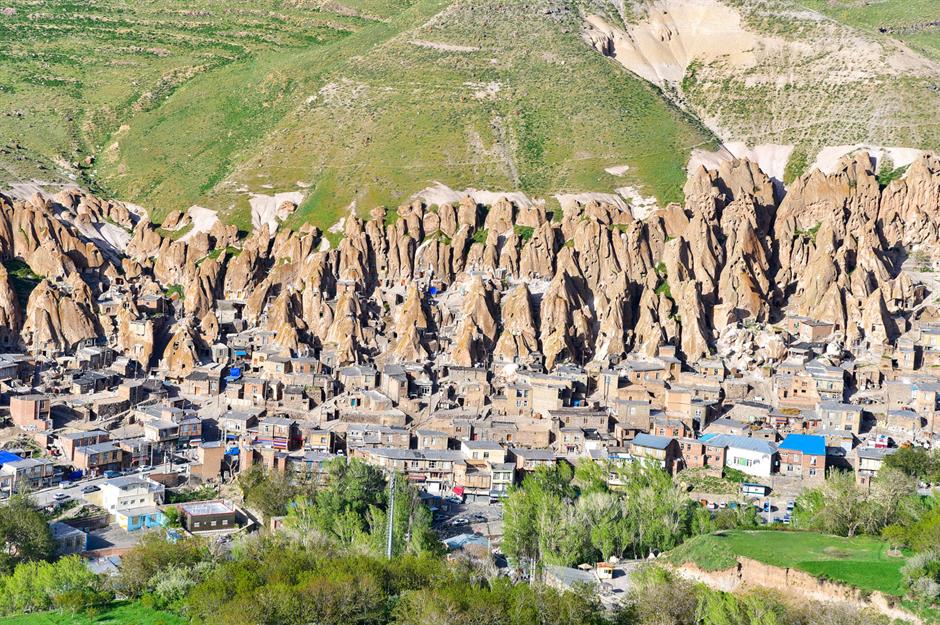
Andrea Lehotska / Shutterstock
Nestled at the foot of the Mount Sahand volcano, the remarkable village of Kandovan in Iran's northeastern East Azerbaijan Province is made up of troglodyte (literally translated from Greek as 'cave-dweller') homes that were carved out of the soft, porous volcanic rock 700 years ago by refugees fleeing the Mongol hordes. These cave houses are called Karaans, possibly after the local dialect word for beehive.
Kandovan cave houses, Osku, Iran
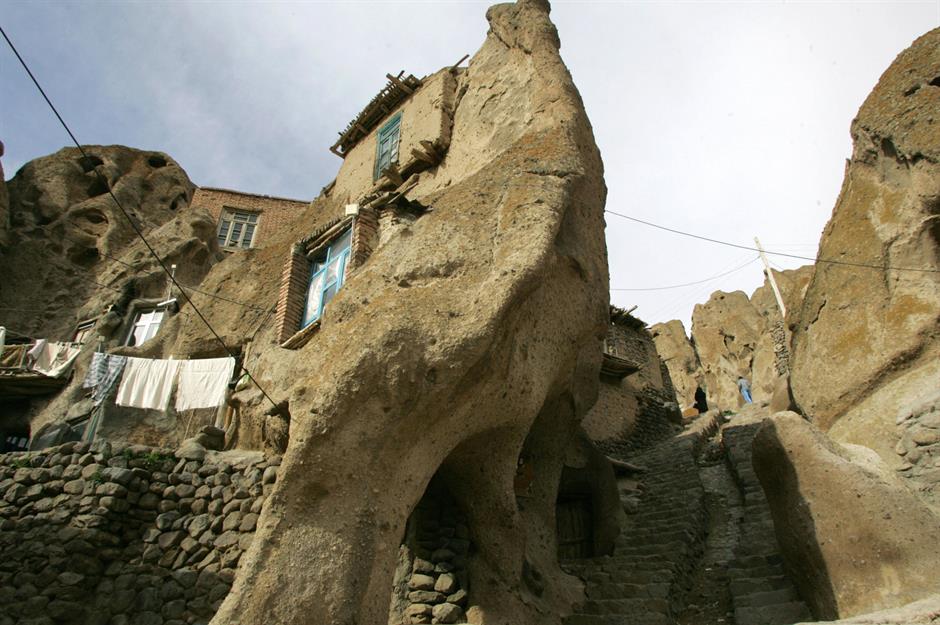
BEHROUZ MEHRI / AFP / Getty
Continuously inhabited since the get-go, the cliff houses are carved into fantastical shapes that look straight out of a fairytale. For centuries they have protected the village's inhabitants from enemy invasions, not to mention the region's blisteringly hot summers and bitter winters, thanks to their precarious position and wonderfully insulating walls.
Kandovan cave houses, Osku, Iran
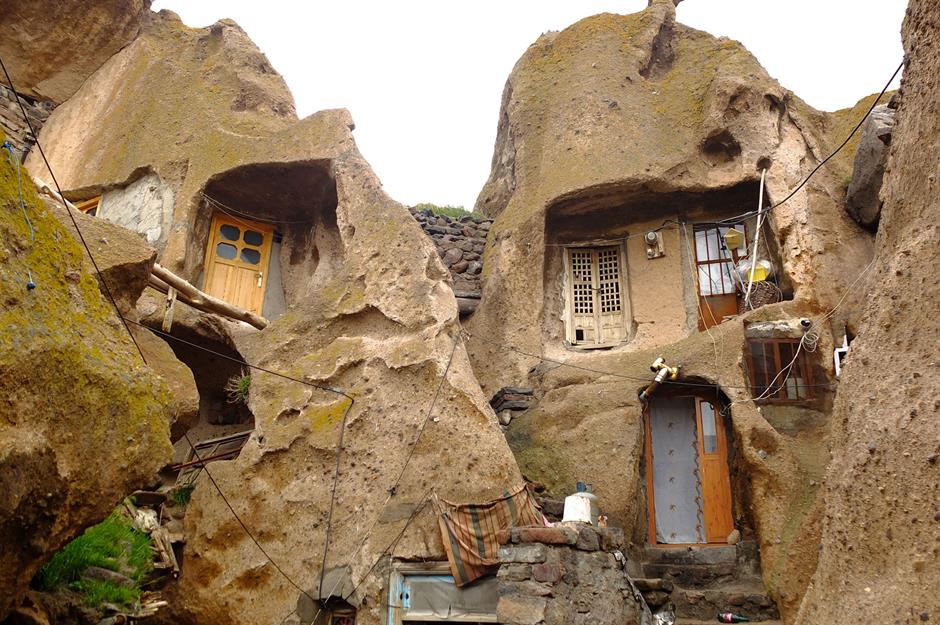
Robert Szymanski / Shutterstock
The homes can stretch up to four storeys in height. The ground floor traditionally houses livestock, living quarters are situated on the next two floors, while the upper level is used for storage. As you might imagine, Kandovan is now a major tourist attraction and the village, which has a population of 670, usually welcomes 300,000 visitors a year– global pandemic notwithstanding.
Kandovan cave houses, Osku, Iran
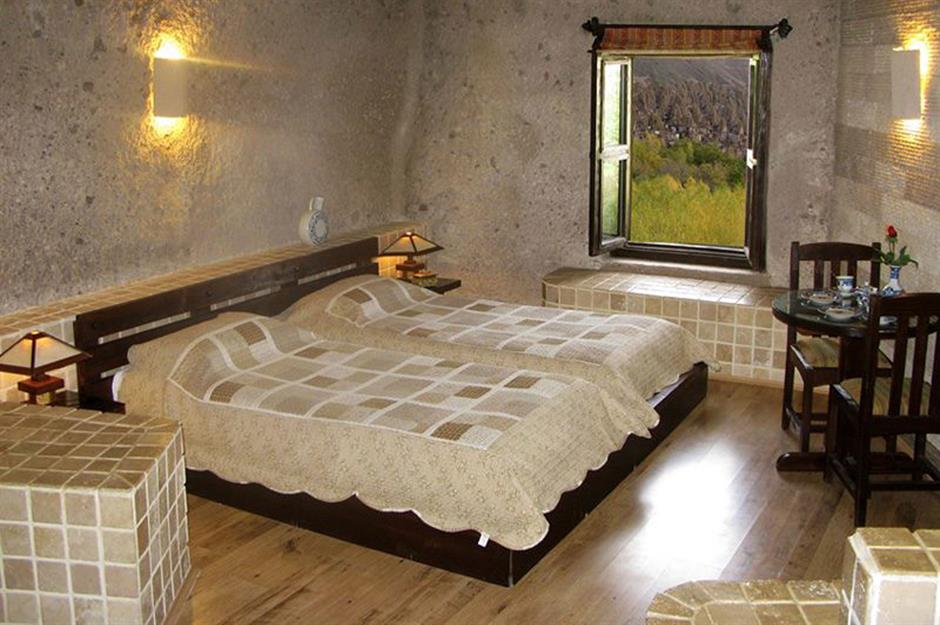
Courtesy Kandovan International Cave Hotel
Kandovan is not only home to these incredible troglodyte dwellings: the village's spring water is said to be healing, plus many of the plants that grow in the area are reported to have restorative properties. To accommodate the ever-growing numbers of visitors, this cave hotel opened in 2006.
Sky City, Acoma Pueblo, New Mexico, USA
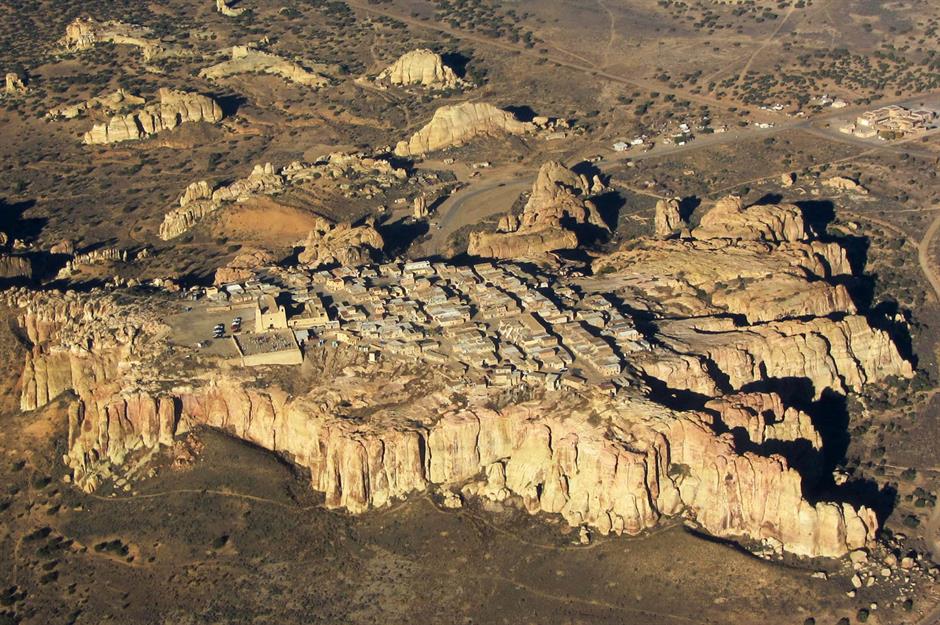
Marshall Henrie (CC BY-SA 3.0) via Wikimedia Commons
Acoma Pueblo near Albuquerque in western New Mexico was established in at least the 12th century, though according to the Native American Acoma People it was even earlier. The earliest surviving homes in the village, which sits atop a 367-foot mesa, are said to have been built between 1144 and 1150 and archaeologists believe the elevated location was first inhabited as far back as 2,000 years ago.
Sky City, Acoma Pueblo, New Mexico, USA

NewMexicophotographer1 (CC BY-SA 4.0) via Wikimedia Commons
The mesa was the ultimate safe haven for the community's early inhabitants, who were exceedingly well protected from Navajo and Apache raiders – the sheer faces of the flat-top hill made the village pretty much impregnable and for centuries the only access was a staircase carved into the sandstone, which could be easily defended.
Sky City, Acoma Pueblo, New Mexico, USA
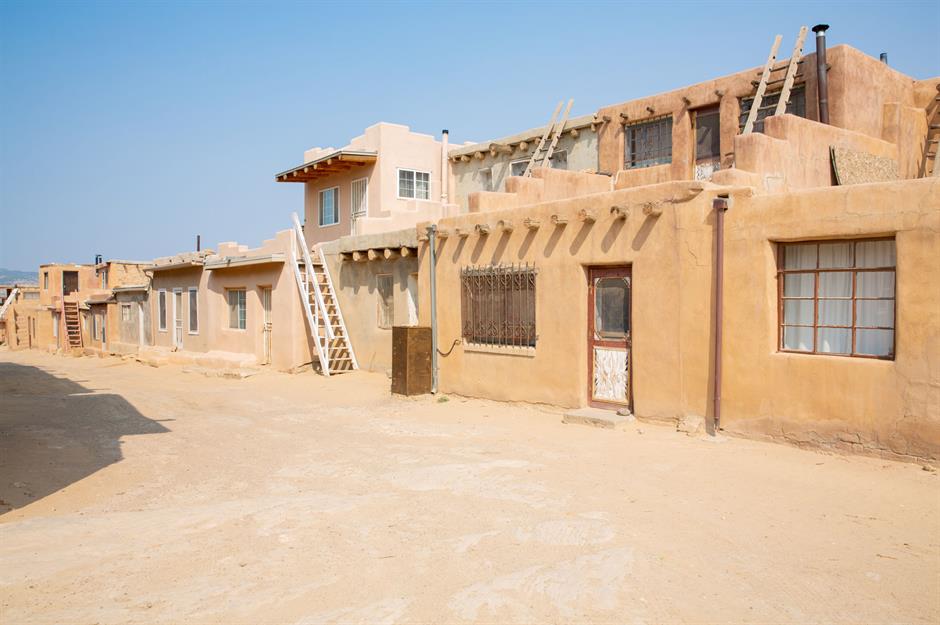
Traveller70 / Shutterstock
Numbering some 300, the pueblo's structures were built using sandstone and adobe bricks, which are made by combining earth, straw, water and sometimes animal blood. They are constructed as multi-level terraces entered by ladders rather than doors. As well as having a spiritual significance, these ladders could be removed in the event of an invasion, further protecting the inhabitants from marauding tribes.
Sky City, Acoma Pueblo, New Mexico, USA
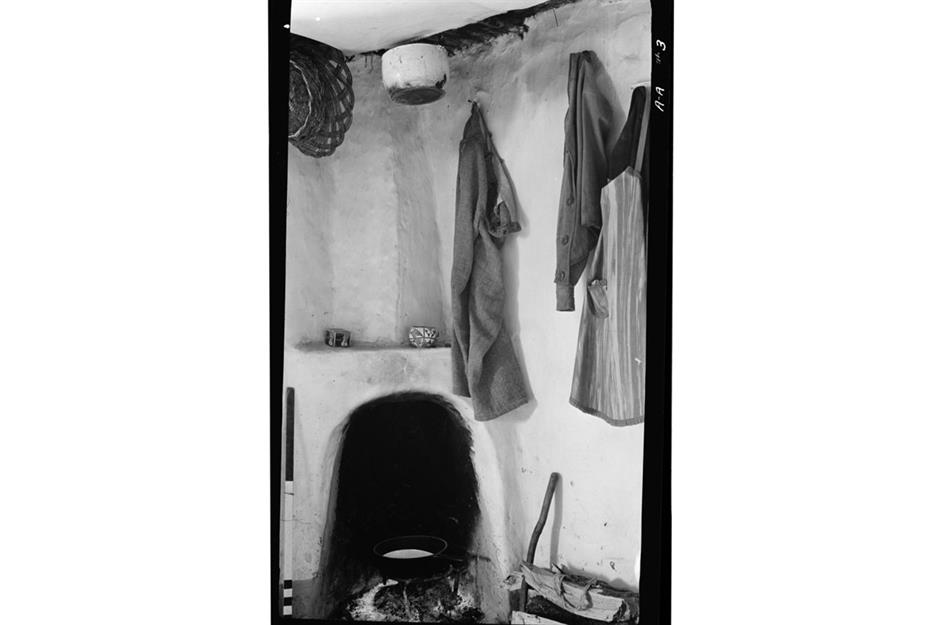
James Slack, Public domain via Wikimedia Commons
This image from 1934 shows the interior of one of the pueblo's homes, specifically one of their characteristic corner fireplaces. The Sky City also features a number of external adobe beehive hornos ('ovens') that were used for baking, cooking and firing pottery, for which the pueblo is famous the world over.
Adobe houses, Taos Pueblo, New Mexico, USA
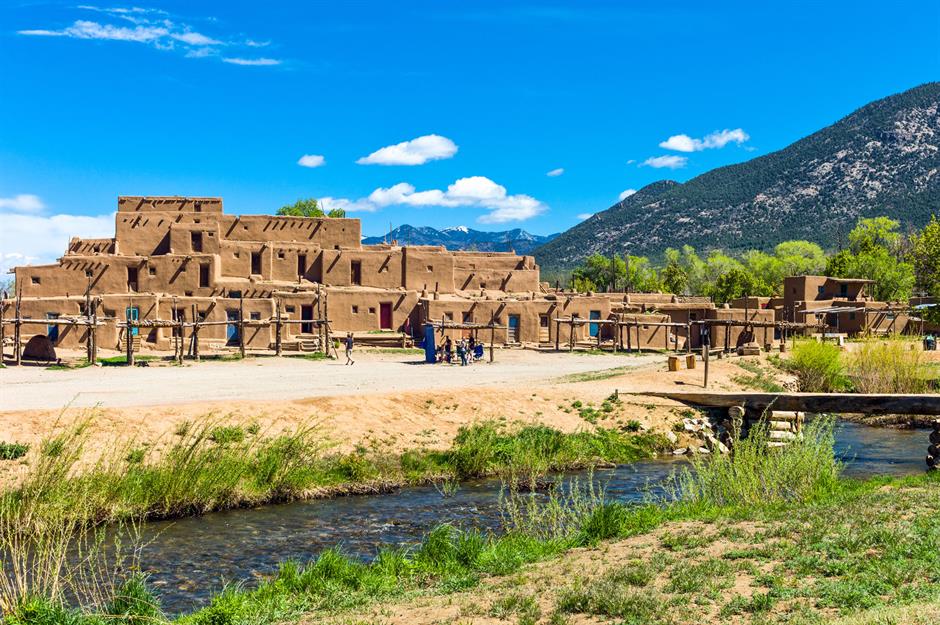
Staying in New Mexico, Taos Pueblo is likely the oldest continuously inhabited site in the US, possibly predating Acoma Pueblo by around a century. The home of the Native American Red Willow People for more than a millennium, the village is located in a high desert valley within the Sangre de Cristo Mountain Range on either side of the Rio Pueblo.
Adobe houses, Taos Pueblo, New Mexico, USA
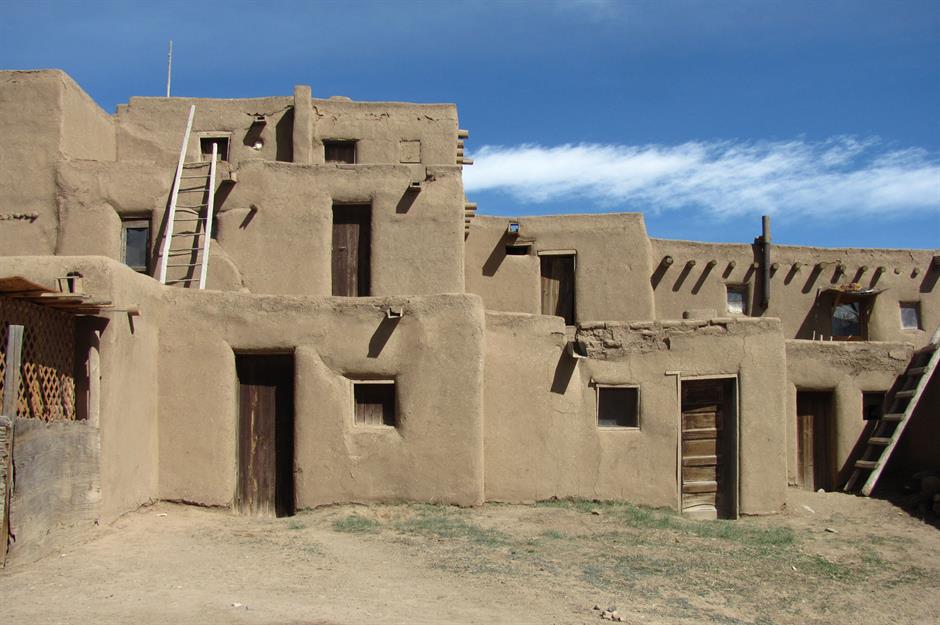
John Phelan (CC BY-SA 3.0) via Wikimedia Commons
Designated both a UNESCO World Heritage Site and a National Historic Landmark, the pueblo is made up of two multi-level apartment-style adobe houses, the Hlauuma ('North House'), which stands five storeys high and is said to be one of the most photographed buildings in the US, and the Hlaukwima ('South House').
Adobe houses, Taos Pueblo, New Mexico, USA

Lewis H. Morgan, Public domain via Wikimedia Commons
The village's adobe houses share many similarities with the homes of Acoma Pueblo as this picture from 1877 shows. Like Acoma's structures, they were traditionally accessed by a ladder, though some went on to feature doors, and ground-floor rooms were kitted out with corner fireplaces. The thick adobe walls provide excellent insulation, keeping the rooms cool in summer and warm during the winter months.
Adobe houses, Taos Pueblo, New Mexico, USA
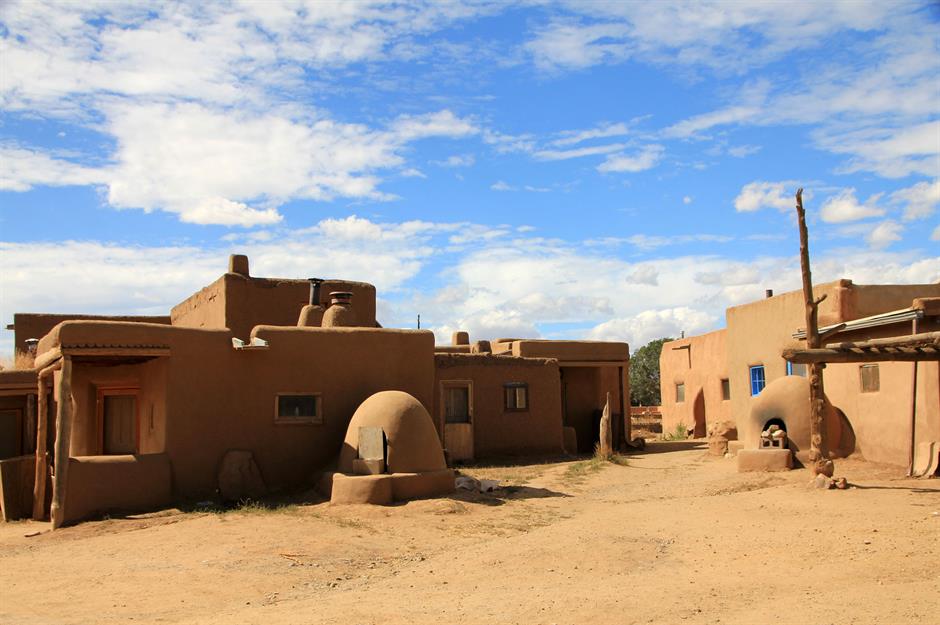
The similarities don't stop there. Taos Pueblo is also dotted with beehive-shaped adobe hornos and like Acoma Pueblo has no electricity, running water or indoor plumbing, which are prohibited for religious reasons. Other interesting features of the village include wooden racks used to dry meat, corn, berries and animal hides.
Saltford Manor House, Somerset, UK

One of two contenders for England's oldest continuously inhabited home, the five-bedroom Grade II-listed Saltford Manor House in Somerset holds a wealth of history within its walls. Architectural historian John Goodall has dated the house to before 1150, possibly around 1148, and it's entirely possible that this site was also used as a residence when the Romans ruled Britain.
Saltford Manor House, Somerset, UK
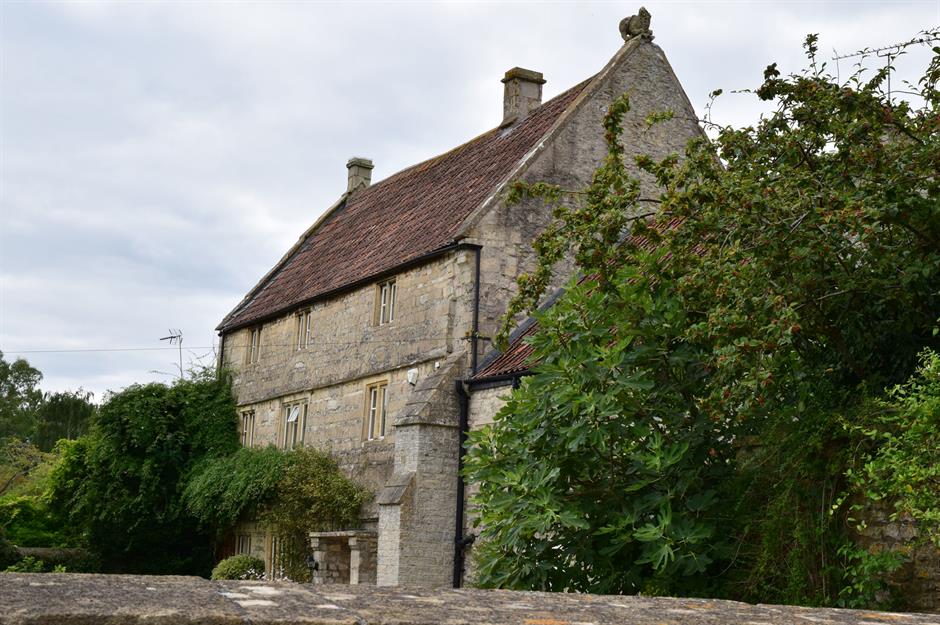
Hugh Llewelyn (CC BY-SA 2.0) via Wikimedia Commons
The Norman manor was constructed on land that belonged to the Earls of Gloucester and Bishop of Coutances Geoffrey de Montbray, a close confidant of William the Conqueror. The house passed through numerous owners before it was acquired by the Duke of Chandos in the late 1700s. The house was then purchased by the Flower family, who owned the property until the late 19th century when it was sold to a local farming couple.
Saltford Manor House, Somerset, UK
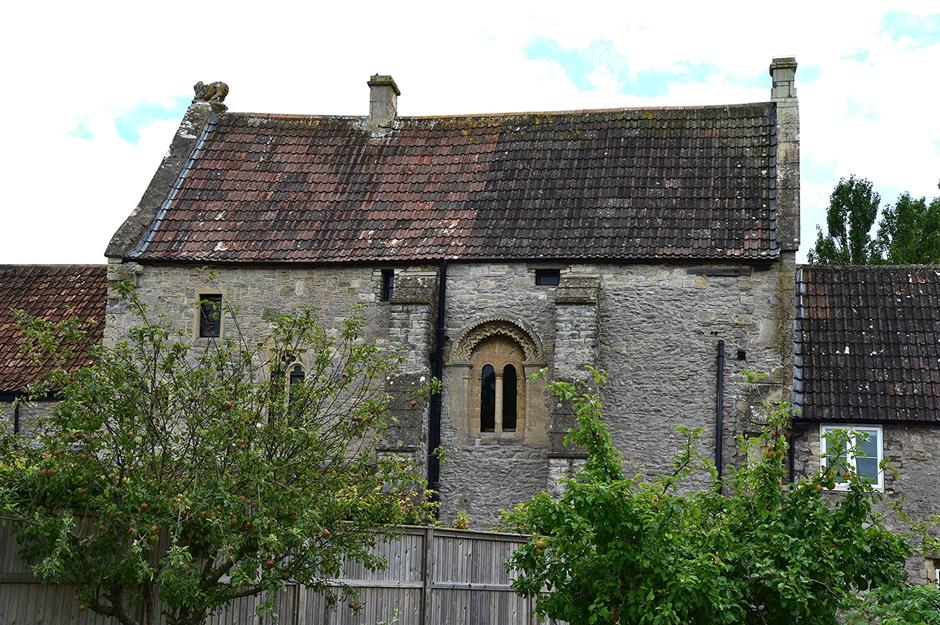
Hugh Llewelyn / Flickr (CC BY-ND 2.0)
The manor fell into a dilapidated state during the early 20th century but was eventually renovated by James and Anna Wynn, who snapped up the rundown property in 1997 for £300,000 ($390k) after selling their relatively modest terraced house in London. The couple ended up offloading the manor in 2010 for a very tidy £1.3 million ($1.7m).
Saltford Manor House, Somerset, UK
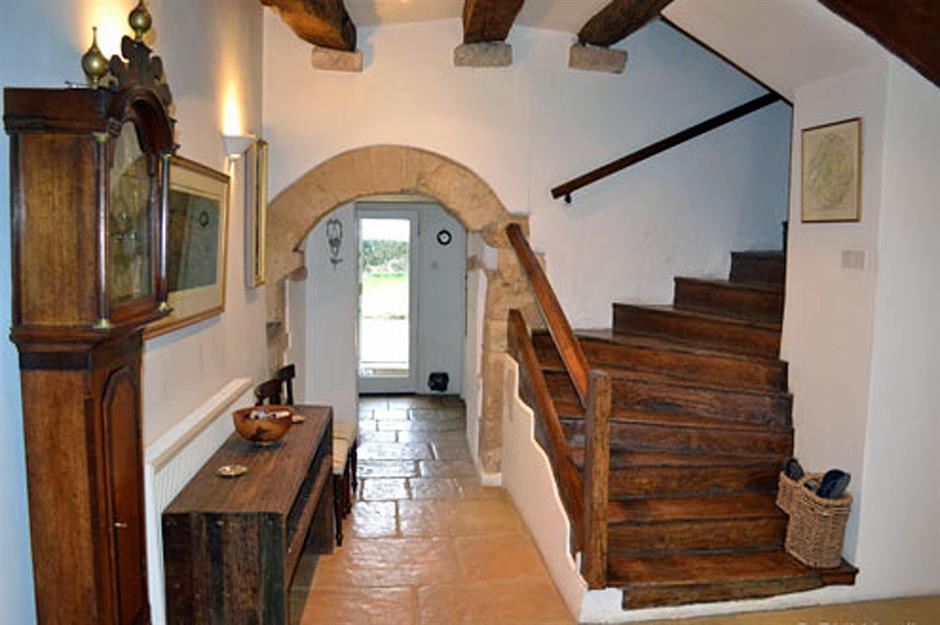
Like many ancient houses, the manor has undergone many changes and additions over the course of its history. Besides its Norman features, which include a window in the master bedroom that closely resembles one in Hereford Cathedral, the house has 13th-century wall paintings, considered to be the oldest surviving medieval frescos in England, a Tudor fireplace and a 17th-century kitchen.
Luddesdown Court, Kent, UK
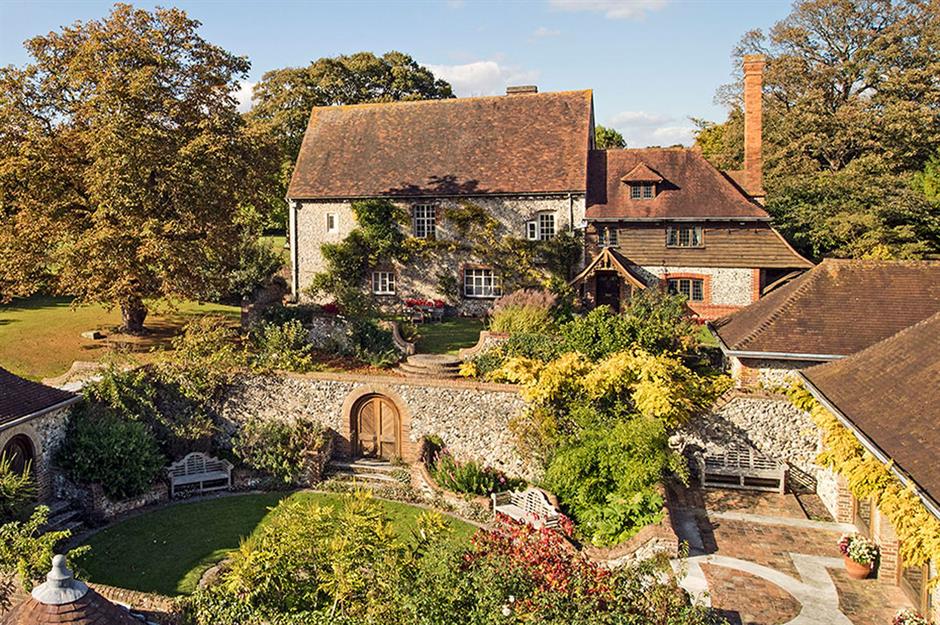
The Grade I-listed Luddesdown Court in Kent is thought to date back as early as the year 1000, which would make it significantly older than Saltford Manor, though the jury is still out. In any case, the L-shaped 6,821-square-foot manor has a long and illustrious history. Built largely in Caen stone and flint, the house, which sits on 23 acres, is said to have been owned by William the Conqueror's half-brother Odo.
Luddesdown Court, Kent, UK
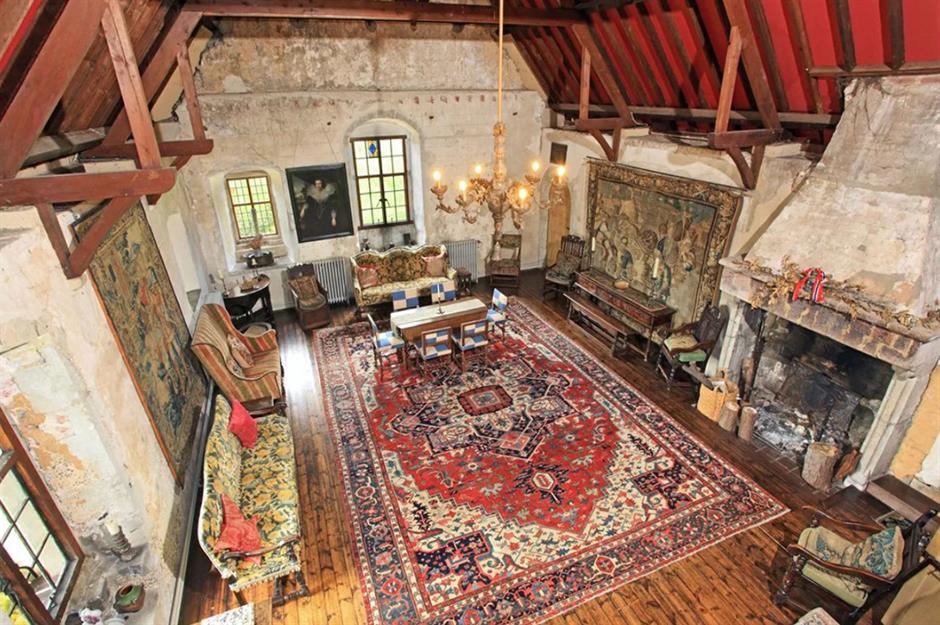
Odo played an important role in the Norman invasion of England and went on to commission the Bayeux Tapestry. Subsequent owners, who include Franco-English nobleman Aymer de Valence, a loyal advisor to Edward II, as well as Welsh Prince Owain Glyndŵr, each put their mark on the property, which is evident in the great hall and minstrels' gallery, which features a Norman fireplace and Tudor chimney.
Luddesdown Court, Kent, UK
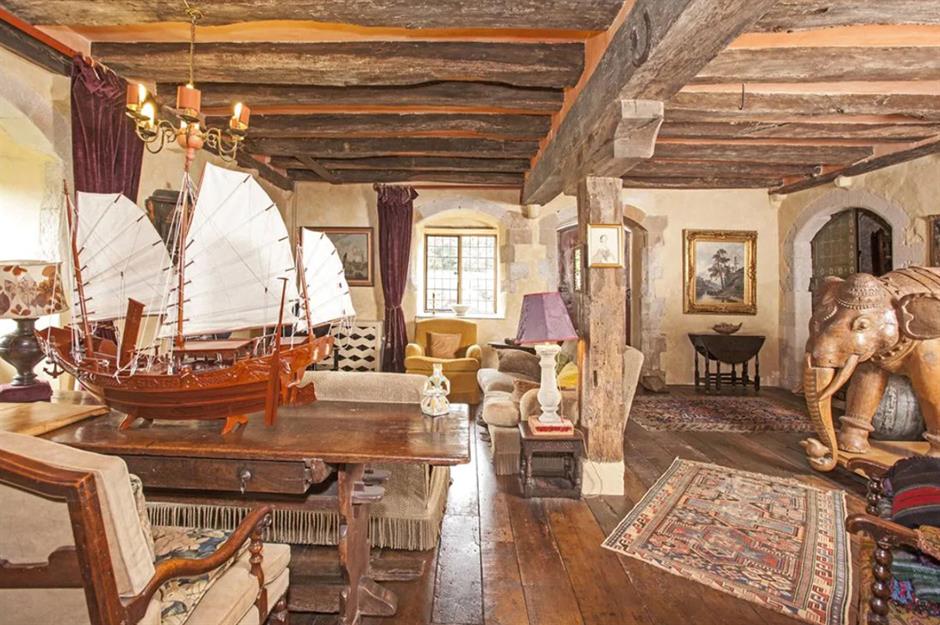
The manor also incorporates elements from the Jacobean and later periods including the Victorian era. In 1979, Luddesdown Court was purchased in a run-down state by Norwegian shipping heir Petter Sundt, who embarked on a sympathetic restoration. He also demolished several outbuildings, which were replaced with a swimming pool and sauna complex, garage block topped by a bell tower, walled sunken garden, and more.
Luddesdown Court, Kent, UK
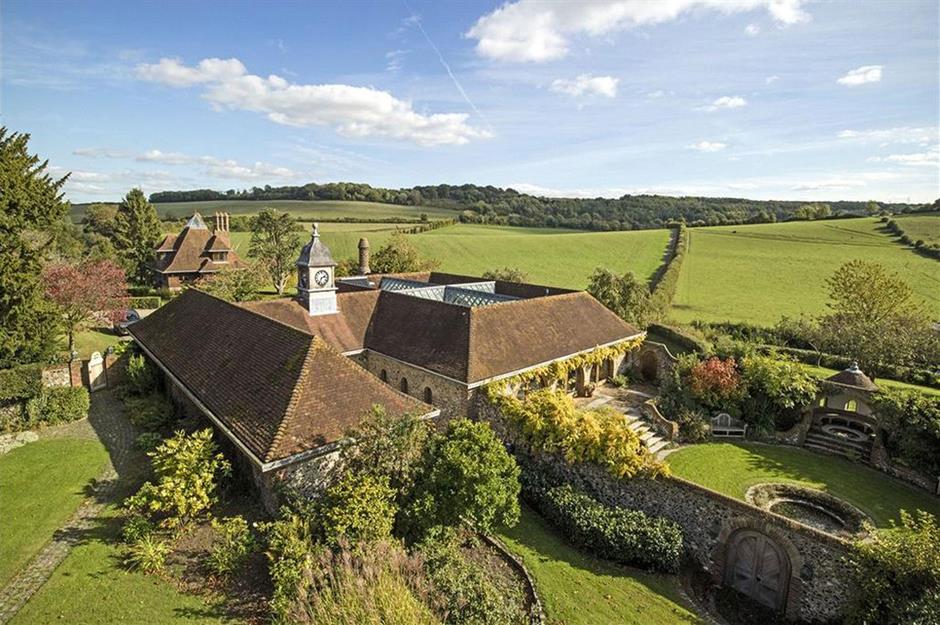
Following Sundt's death in 2007, the manor passed to his daughter Christine. The shipping scion oversaw further meticulous renovations and put the five-bedroom property up for sale in 2018 via Knight Frank with an asking price of £3.5 million ($4.7m). No doubt the new owner has the resources to look after the historic house, which reportedly costs a hefty £90,000 ($120k) a year to maintain.
Viking farmhouse, Kirkjubøur, Faroe Islands
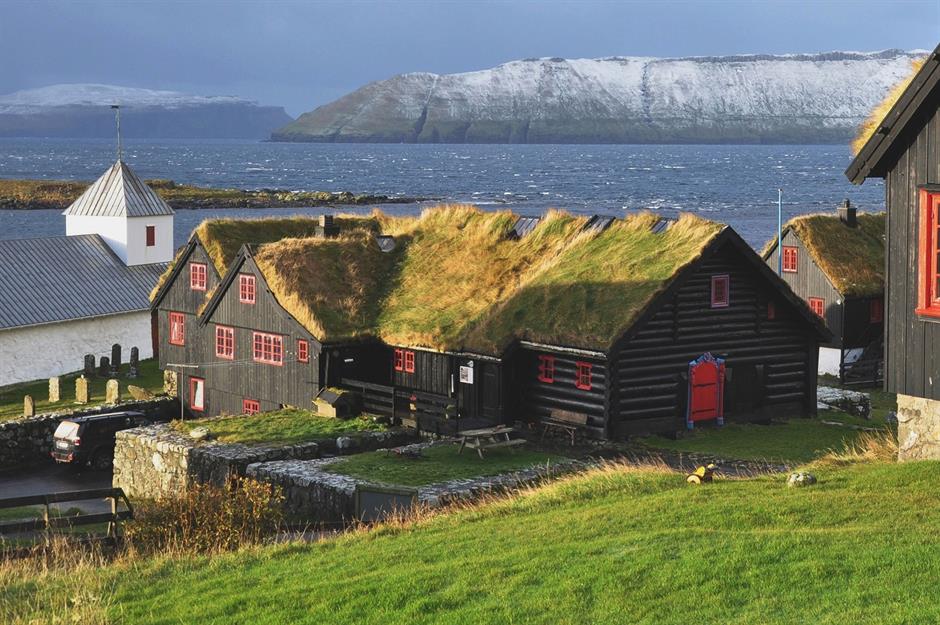
Vincent van Zeijst, (CC BY-SA 3.0) via Wikimedia Commons
Kirkjubøargarður ('Yard of Kirkjubøur') aka King's Farm in the windswept Faroe Islands is one of the oldest continuously inhabited wooden homes in the world and could very well be the most venerable. The remote farmhouse was constructed in the 11th century using driftwood from Norway – the Faroe Islands are virtually treeless and timber has long been a precious commodity.
Viking farmhouse, Kirkjubøur, Faroe Islands
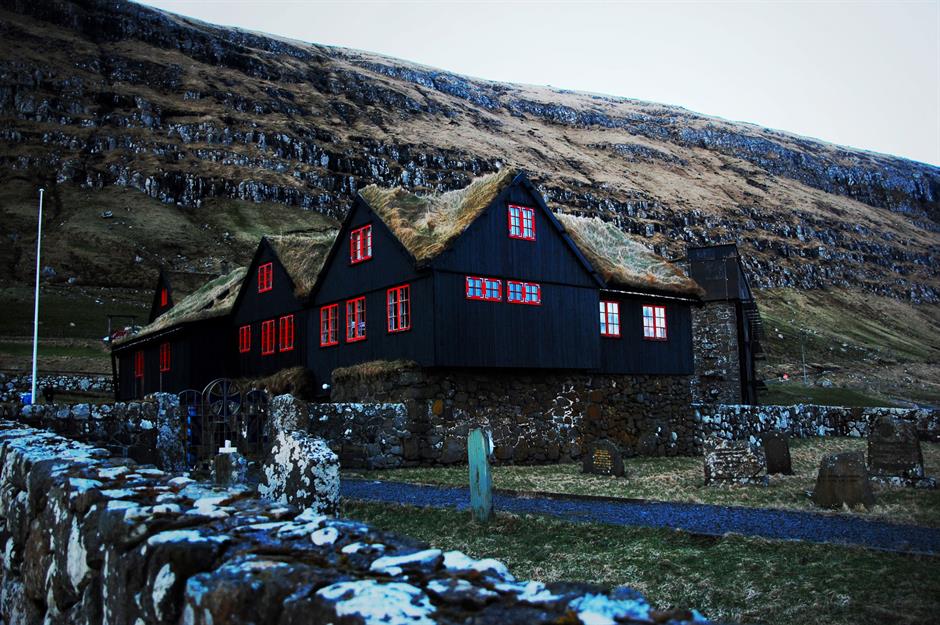
Agnieszka Rumińska / Flickr (CC BY-ND 2.0)
The Viking farmhouse, which like many traditional structures in the Faroe Islands features a turf roof to keep out the elements, first served as a Catholic episcopal residence and seminary. It was here that Bishop Erlendur penned the so-called Sheep's Letter in 1298. The statute concerning sheep breeding is the earliest known document created in the Faroe Islands.
Viking farmhouse, Kirkjubøur, Faroe Islands
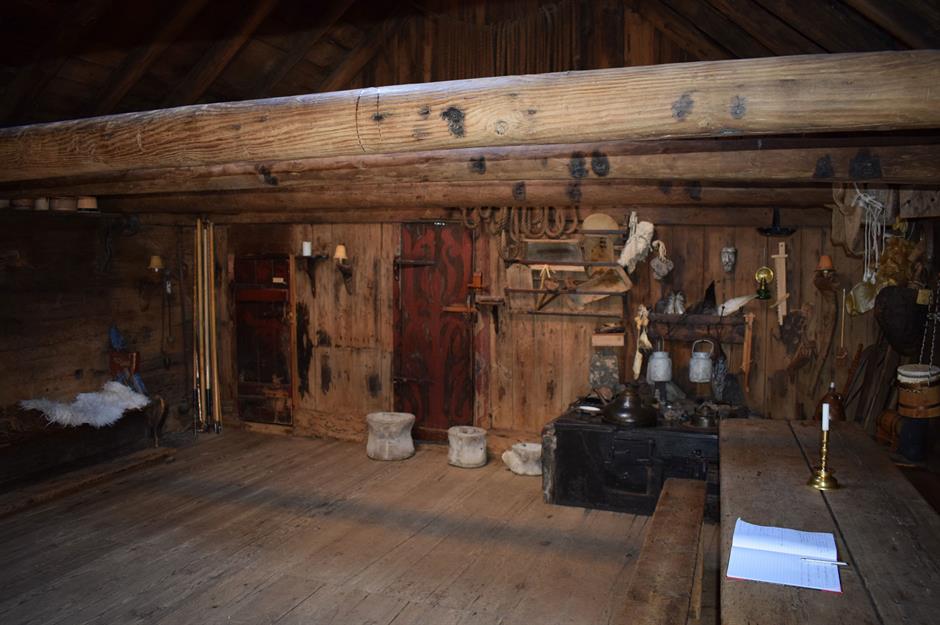
Erik Fløan (CC BY-SA 4.0) via Wikimedia Commons
In 1538, not long after the Protestant Reformation, the farmhouse was confiscated by the King of Denmark. Kirkjubøargarður was leased to the Patursson family in the 1550s and has passed through 17 generations, with the eldest son who is dubbed the King's Farmer, always assuming the tenancy. Today, the ultimate owner of the property is the Faroese government.
Viking farmhouse, Kirkjubøur, Faroe Islands
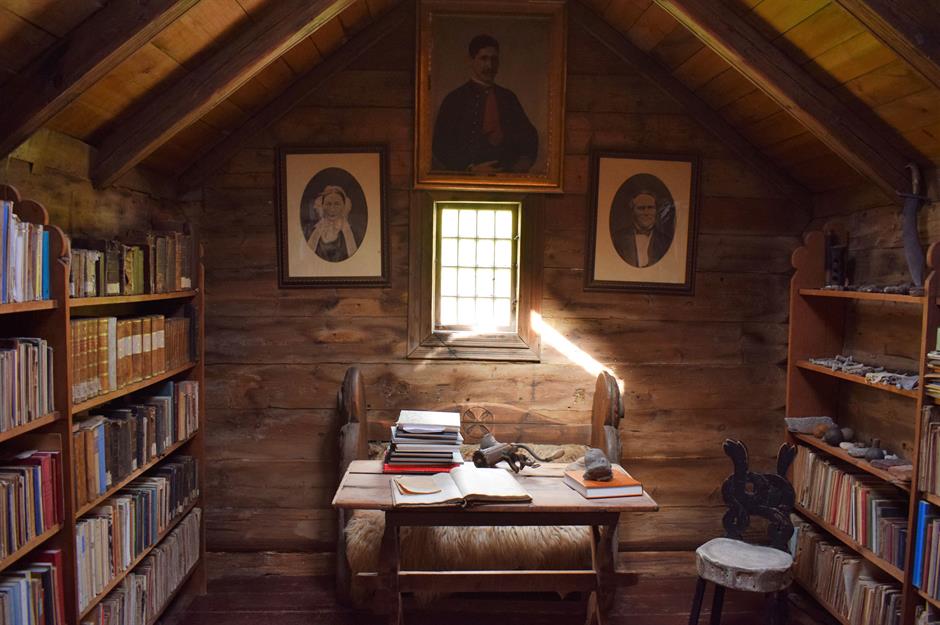
Erik Fløan (CC BY-SA 4.0) via Wikimedia Commons
The farm remains the largest in the Faroe Islands and the current custodians raise sheep and cattle. Visitors can take a tour of the interior of the farmhouse, which is as cosy as they come and filled with a plethora of age-old artefacts, and explore the surrounding historic buildings that include the 12th-century St Olav's Church and the ruins of the 13th-century St Magnus Cathedral.
Old Sana'a tower houses, Sana'a Governate, Yemen

Dan from Brussels, Europe (CC BY-SA 2.0) via Wikimedia Commons
The ancient city of Old Sana'a high up in the Yemeni Mountains dates back more than 2,500 years, making it one of the most venerable continuously inhabited urban areas on the planet. A UNESCO World Heritage Site, Old Sana'a is renowned for its rammed earth tower houses. As many as 6,000 of these multi-level homes were constructed before the 11th century.
Old Sana'a tower houses, Sana'a Governate, Yemen
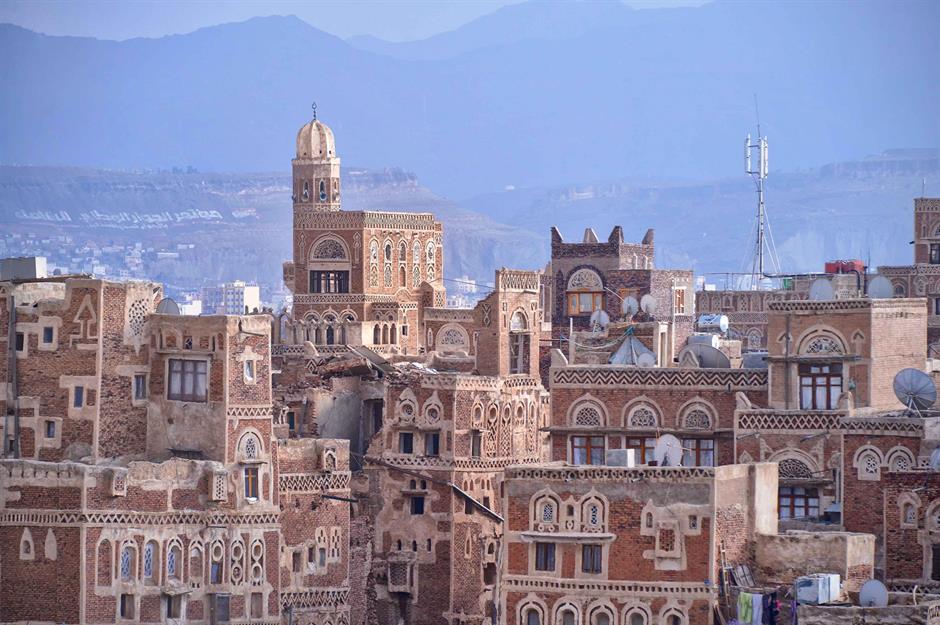
Rod Waddington / Flickr (CC BY-ND 2.0)
Dubbed the world's oldest skyscrapers, these lofty buildings soar up to nine storeys and boast intricate geometric friezes crafted from fired bricks and white gypsum punctuated by colourful stained glass windows, which contrast beautifully with their ochre facades. Sadly, these extraordinary structures are under threat like never before.
Old Sana'a tower houses, Sana'a Governate, Yemen

Sebastiano Tomada / Getty
Yemen has been in the grip of a devastating proxy civil war since 2014 after Iran-backed Houthi rebels ousted the Saudi-aligned government and took control of Old Sana'a and other parts of the country. Since then, the city has been battered by Saudi-led airstrikes, which have destroyed a number of its iconic tower houses, and many of those that are still standing are suffering severe neglect.
Old Sana'a tower houses, Sana'a Governate, Yemen
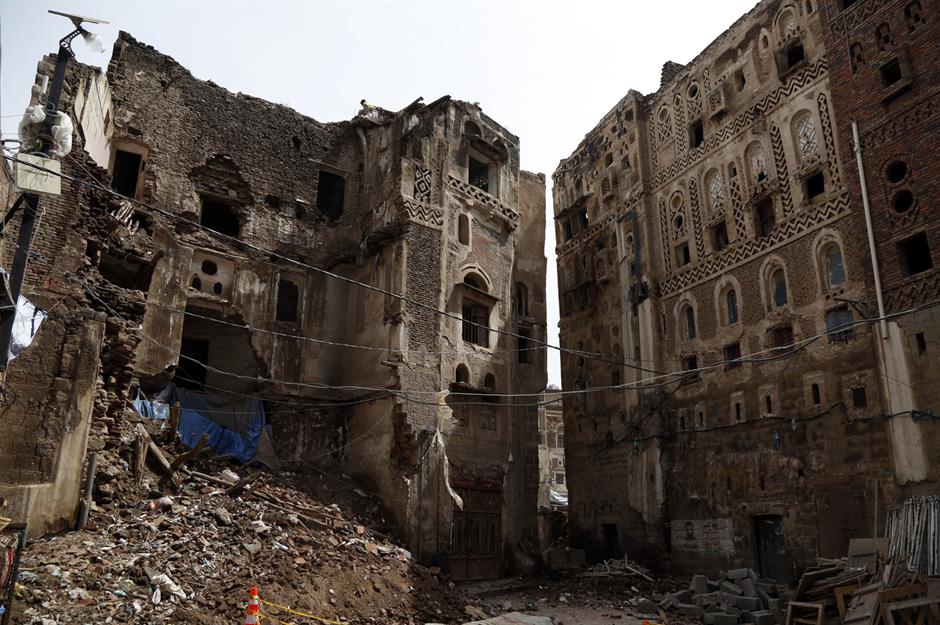
unreguser / Xinhua News Agency / PA
Adding to the multiple threats to the city's heritage, Old Sana'a has endured months of exceptionally heavy rains this year. Weakened by the forces of Mother Nature and widespread flooding, 111 tower houses have collapsed and 6,000 dwellings have leaky roofs. With the war showing no sign of ending, the situation is only likely to get worse.
Aleppo Citadel houses, Aleppo Governorate, Syria
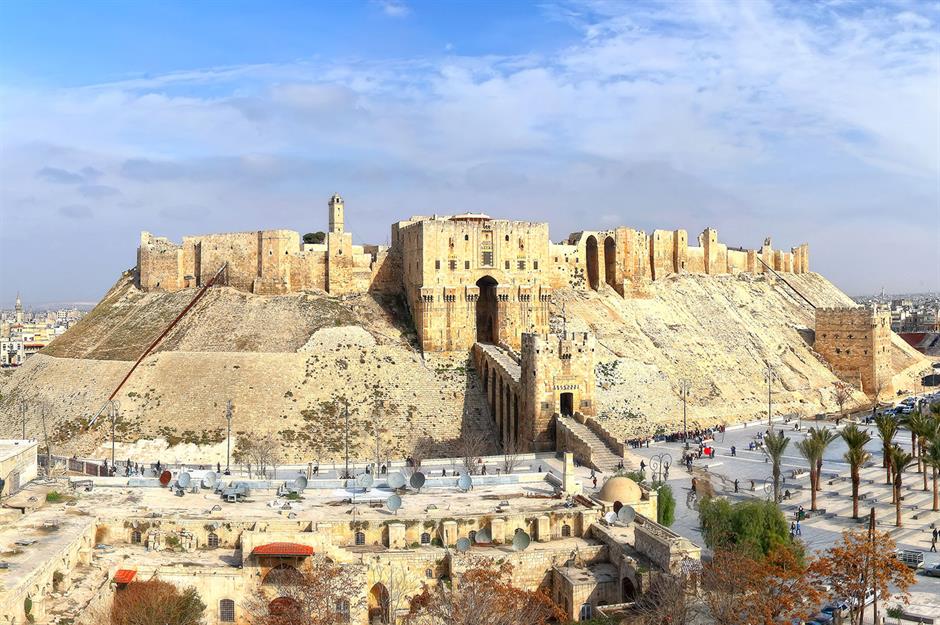
Anas Al Rifai (CC BY-SA 3.0)
From one war-torn place to another, Aleppo's ancient Citadel, which looms over the Syrian city, dates way back to the third millennium BC but the majority of the residences within its walls were erected by the Ayyubids during the 12th and 13th centuries. Steeped in history, the UNESCO World Heritage Site has withstood everything from earthquakes to sieges over the centuries.
Aleppo Citadel houses, Aleppo Governorate, Syria

Starting out as a temple to the Mesopotamian storm god Hadad, the citadel was first used as a fortification by the Macedonians in the third or fourth century BC. It was conquered by Muslim forces in 636 AD and later became the capital of the Hamdamid dynasty, before it was sacked by the Christian Byzantines in 962 AD.
Aleppo Citadel houses, Aleppo Governorate, Syria
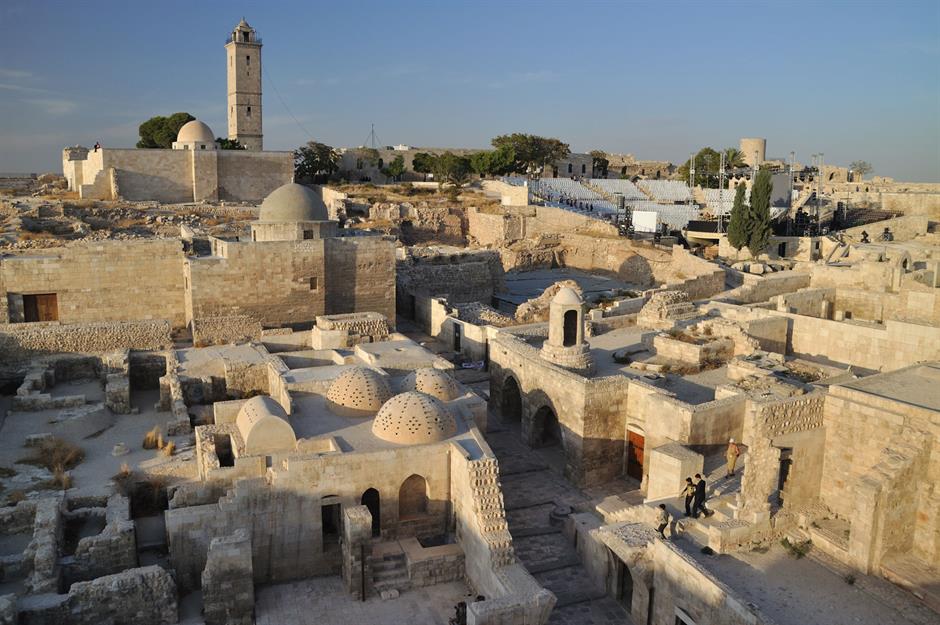
vyskoczilova / Shutterstock
Thereafter, the citadel was occupied by the Zengid, Ayyubids, Mongols and Mamluks, eventually falling into Ottoman hands in the 16th century. Throughout its long history, the fortified palace has been damaged and restored numerous times but was never completely destroyed, which gives testament to its resilience.
Aleppo Citadel houses, Aleppo Governorate, Syria
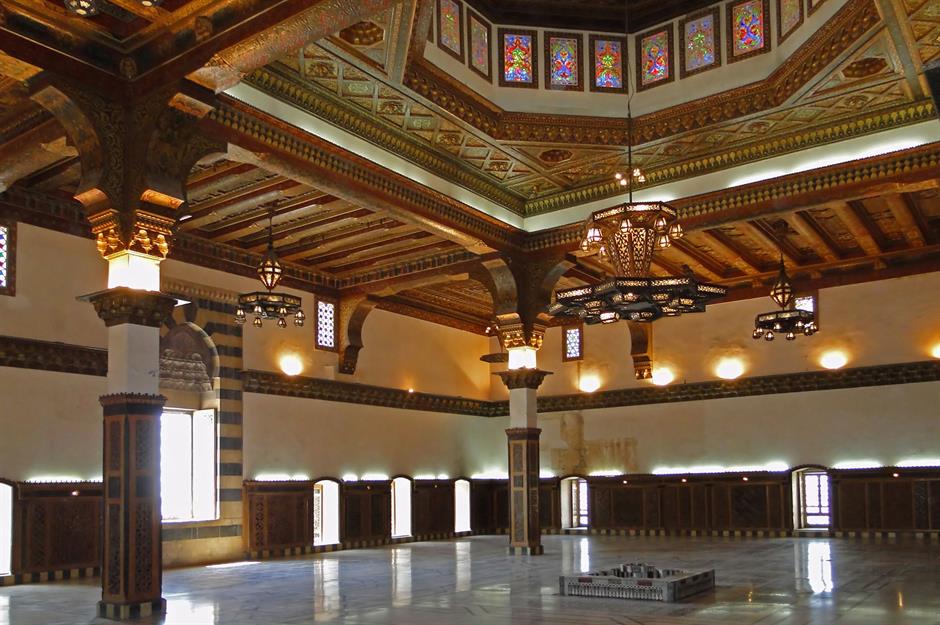
Bernard Gagnon (CC BY-SA 3.0) via Wikimedia Commons
The Mamluk Throne Hall was restored by the French during the 19th century and then extensive conservation work was carried out in the 2000s, funded by the Aga Khan Trust for Culture. During the 2010s, the citadel was severely damaged during the four-year Battle of Aleppo. It reopened to the public in 2017 and is currently undergoing yet another major restoration.
Cave houses of Sassi di Matera, Basilicata, Italy
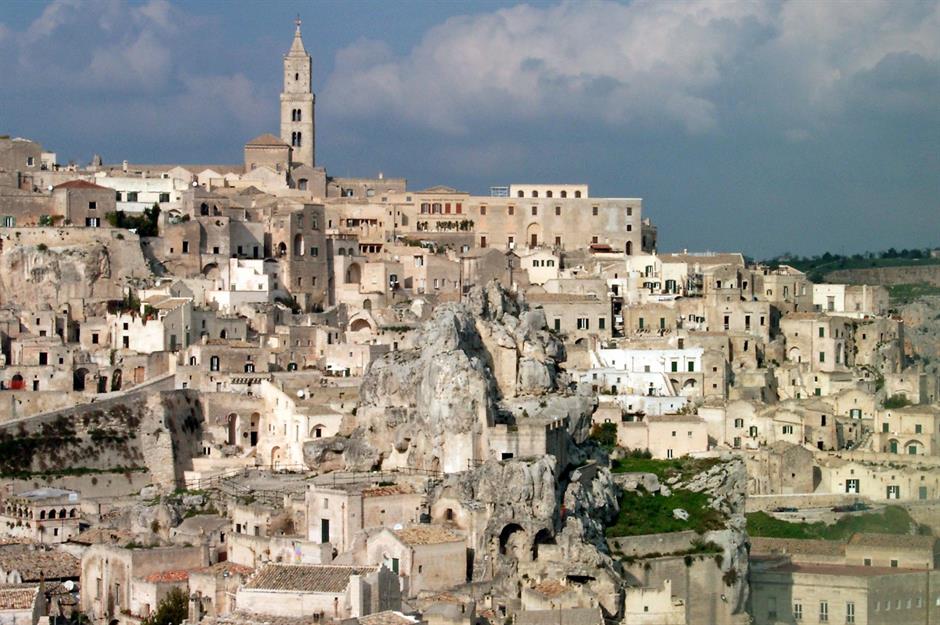
Bönisch (CC BY-SA 2.0 DE) via Wikimedia Commons
Carved out of calcarenitic rock, the cave houses of Sassi di Matera ('Stones of Matera'), which comprise two districts called Sasso Caveoso and Sasso Barisano within the age-old city of Matera in southern Italy's Basilicata region, have been inhabited since the Paleolithic period. Archaeological evidence shows people lived in the grottoes as far back as 7000 BC.
Cave houses of Sassi di Matera, Basilicata, Italy
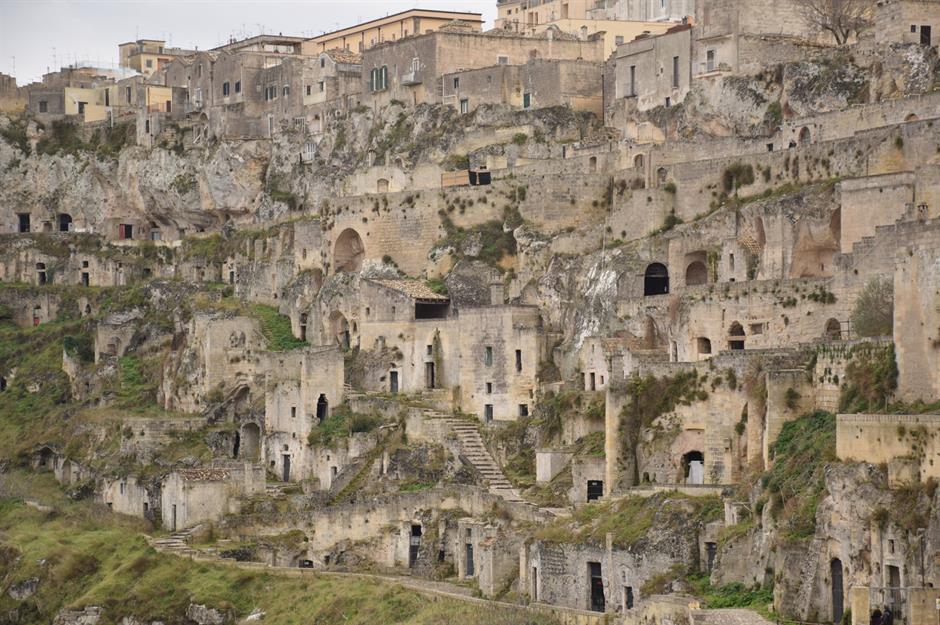
sergio capuzzimati / Shutterstock
Unlike some of the other homes in our round-up, these troglodyte dwellings were far from comfortable and extreme poverty and disease were rife right up until the middle part of the 20th century. The slum districts were considered so deprived that there was a phrase that 'even God has forsaken them'.
Cave houses of Sassi di Matera, Basilicata, Italy
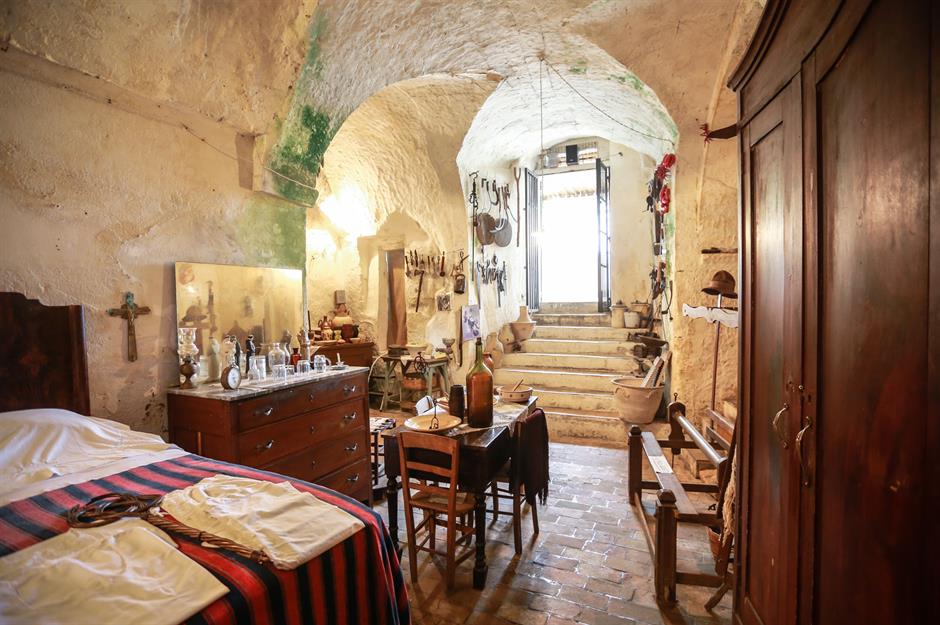
While the majority of locals were relocated in the 1960s, people continued to live in the same houses their ancestors resided in 9,000 years ago. Thankfully, the Sassi's fortunes turned around spectacularly during the late 20th century when the Italian government sponsored a number of restoration and infrastructure projects following the districts' designation as a UNESCO World Heritage Site in 1993.
Cave houses of Sassi di Matera, Basilicata, Italy
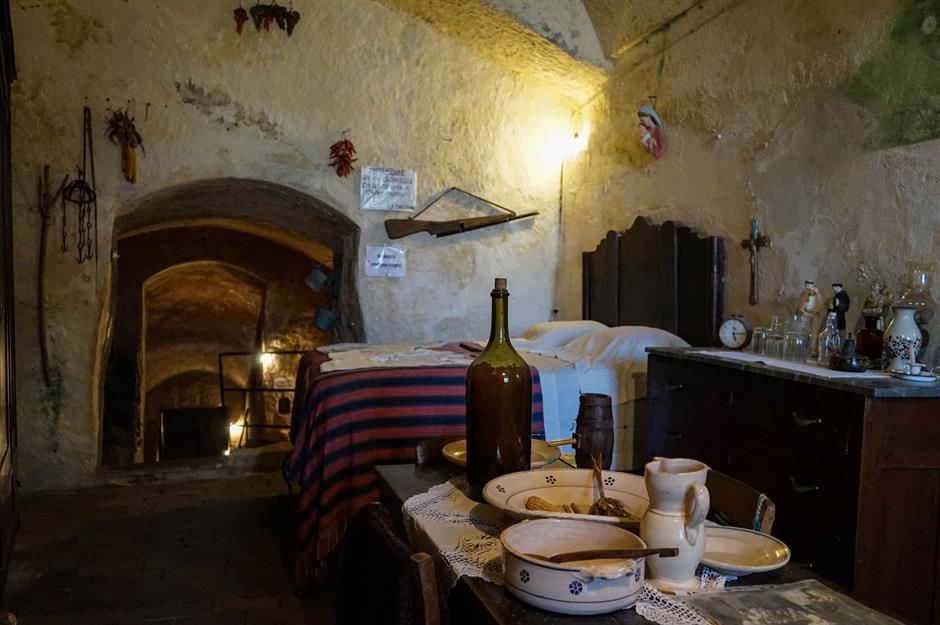
Artisans moved into the renovated cave dwellings and a plethora of bars, restaurants and hotels opened when Matera won its bid to become the 2019 European Capital of Culture. In an average year, the Sassi attracts an impressive 600,000 visitors to its unique houses and upwards of 25% of the properties are available to rent out through Airbnb – more than anywhere else in Italy.
Loved this? Like and follow us on Facebook for more extraordinary homes around the world
Be the first to comment
Do you want to comment on this article? You need to be signed in for this feature
Source: https://www.loveproperty.com/gallerylist/102668/the-oldest-homes-in-the-world-still-standing
0 Response to "Oldest Continuously Inhabited Homes in the World"
Post a Comment